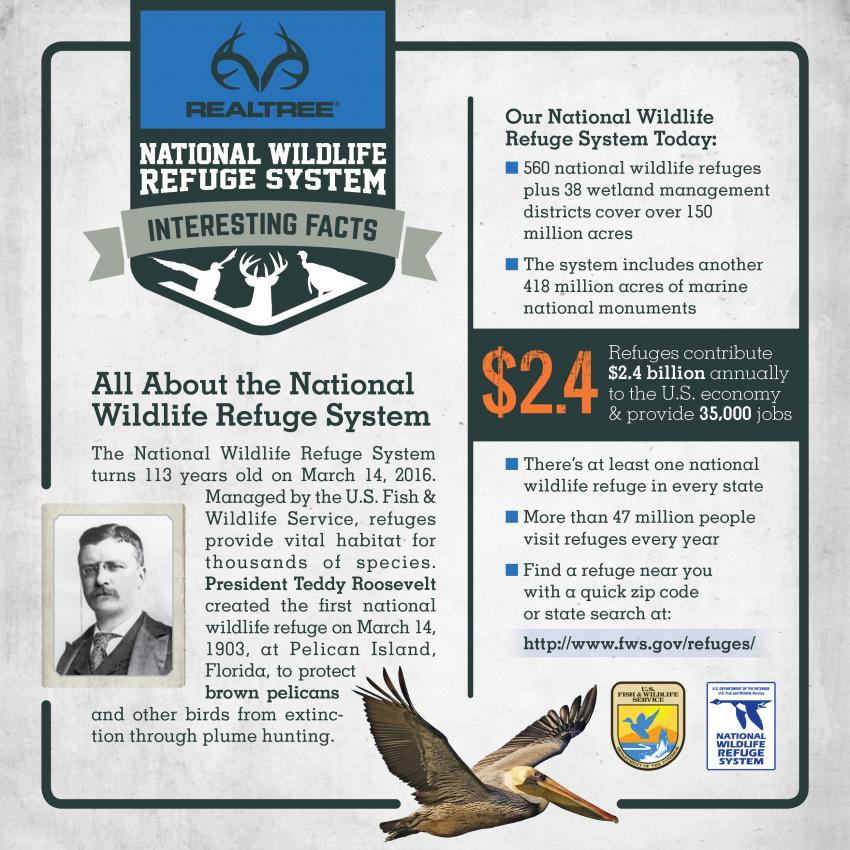All About the National Wildlife Refuge System
- March 7, 2016
- By Team Realtree
- Research

In celebration of the National Wildlife Refuge System’s 113th birthday on March 14, 2016, we put together this infographic to explain the size and scope of this remarkable network of public lands devoted to wildlife conservation.
Managed by the U.S. Fish and Wildlife Service, these refuges protect wildlife habitat on dramatic landscapes that range from Oregon’s rocky cliffs to Texas lagoons, and from Alaska wilderness to woods and ponds within Philadelphia city limits.
“These are America’s refuges — an unparalleled system of public lands that provide access to the great outdoors to all its citizens,” said Service Director Dan Ashe. “Refuges are intrinsic parts of the communities that surround them, contributing to the local economies, serving as recreational epicenters for residents and visitors, and keeping local ecosystems healthy and resilient. What better way to celebrate these national treasures on this anniversary than by visiting your nearest refuge?”
Many of America’s beloved wildlife species — including those threatened with extinction, such as the whooping crane, manatee and ocelot — depend on national wildlife refuges for their survival. And refuges provide a range of vital ecosystem services, including storm buffering and flood control, air and water purification, and the maintenance of robust populations of native plants and animals.
In an increasingly urban America, refuges also provide an important connection with the outdoors, particularly for young people. There is a refuge within an hour’s drive from most major metropolitan areas. The Service’s Urban Wildlife Conservation Program, launched in 2013, is providing new opportunities for residents of America’s cities to learn about and take part in wildlife habitat conservation.

No matter where you live, you can enjoy nature at a refuge near you. Visit www.fws.gov/refuges to learn more.
